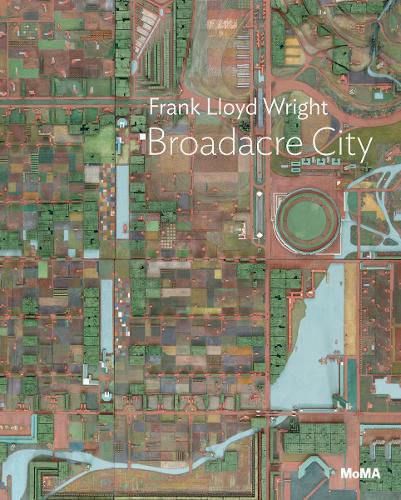Readings Newsletter
Become a Readings Member to make your shopping experience even easier.
Sign in or sign up for free!
You’re not far away from qualifying for FREE standard shipping within Australia
You’ve qualified for FREE standard shipping within Australia
The cart is loading…






This latest volume in the MoMA One on One series focuses on Frank Lloyd Wright's Broadacre City Project (1934-1935).
Frank Lloyd Wright's proposal for Broadacre City (1929-35) put forth a remarkable claim-that the metropolis was obsolete. In its place, Broadacre was to be a "Usonian" synthesis, an unprecedented landscape unsullied by convention or history, consisting simply of "architecture and acreage." With its low-density carpet of small plots, predominantly one- and two-story buildings, and seemingly infinite territory, the ruralized landscape of Broadacre would sustain new levels of individuality and freedom, far more democratic than a traditional metropolis could ever support. Yet the 4-square-mile (10.4-squarekilometer) area of the Broadacre City model would give home to only 1,400 families, making the population density not quite urban or rural or suburban, but somehow their hybrid, with a social and spatial structure that eludes clear definition.
$9.00 standard shipping within Australia
FREE standard shipping within Australia for orders over $100.00
Express & International shipping calculated at checkout
This latest volume in the MoMA One on One series focuses on Frank Lloyd Wright's Broadacre City Project (1934-1935).
Frank Lloyd Wright's proposal for Broadacre City (1929-35) put forth a remarkable claim-that the metropolis was obsolete. In its place, Broadacre was to be a "Usonian" synthesis, an unprecedented landscape unsullied by convention or history, consisting simply of "architecture and acreage." With its low-density carpet of small plots, predominantly one- and two-story buildings, and seemingly infinite territory, the ruralized landscape of Broadacre would sustain new levels of individuality and freedom, far more democratic than a traditional metropolis could ever support. Yet the 4-square-mile (10.4-squarekilometer) area of the Broadacre City model would give home to only 1,400 families, making the population density not quite urban or rural or suburban, but somehow their hybrid, with a social and spatial structure that eludes clear definition.